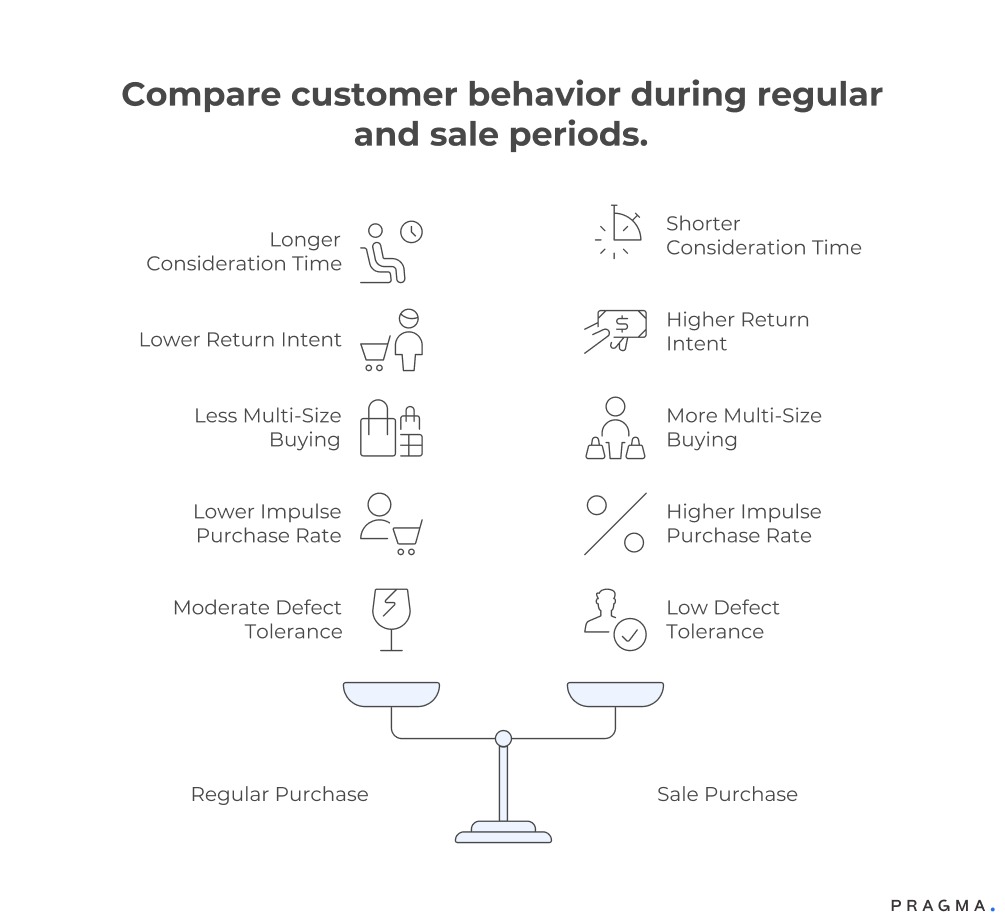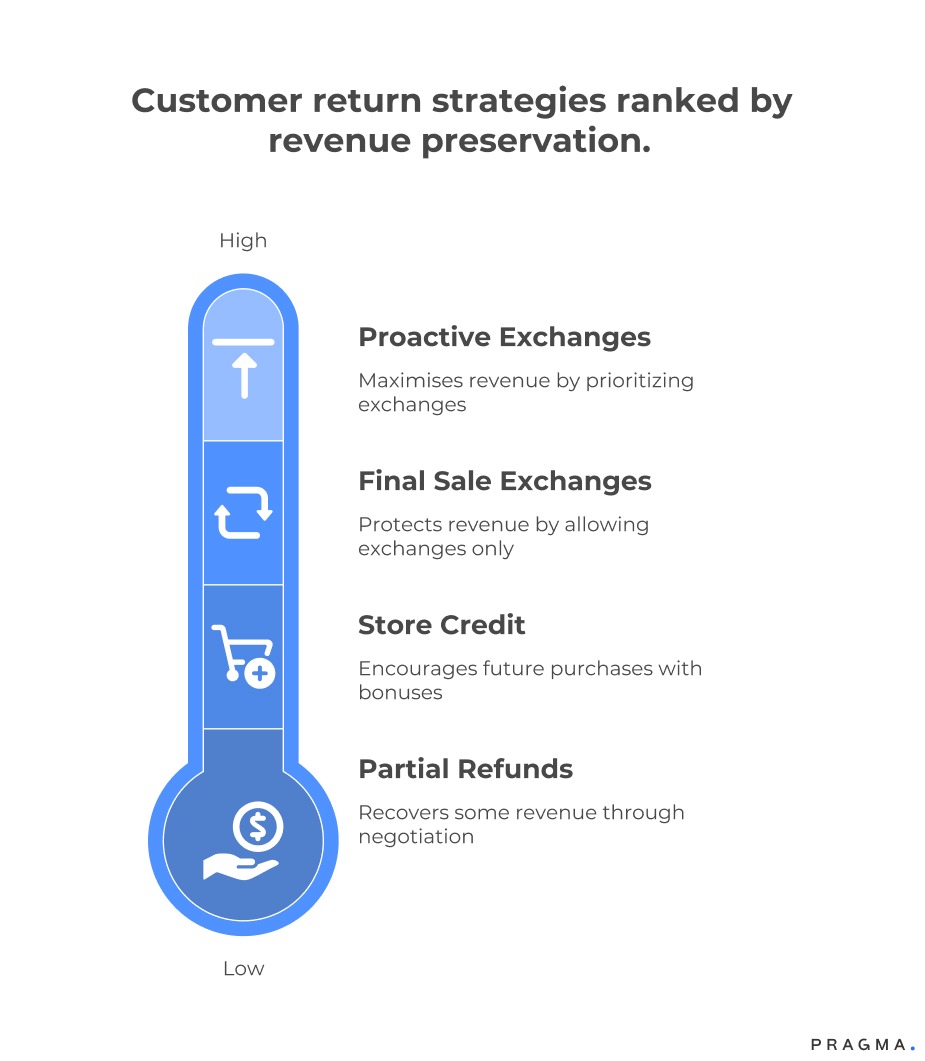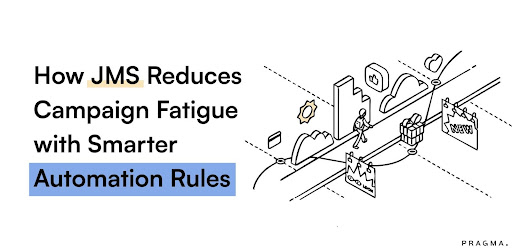End-of-season sales represent a critical opportunity for Indian D2C and e-commerce brands to unlock inventory, attract new customers, and boost revenue. However, they also come with a unique set of return challenges. Sale purchases generally have higher return rates due to impulse buying, sizing uncertainties, and price sensitivity, creating a surge in reverse logistics volumes right when brands want to maximise profitability and operational efficiency.
To navigate this delicate balance, brands must adopt specialised strategies tailored for end-of-season returns—beyond their standard return policies and workflows. Doing so involves proactive customer communication, smarter return eligibility criteria, efficient processing systems, and data-driven insights to identify patterns and manage inventory recovery effectively.
This blog delves into what brands should do differently for End-of-Season Sale Returns to protect margins, enhance customer satisfaction, and convert what could be costly returns into opportunities for loyalty and repeat purchase.
Why do sale periods generate disproportionately high return rates?
Price psychology and buyer behaviour shifts during promotions create fundamentally different purchase patterns than regular transactions

Experimental purchasing at deep discounts lowers commitment thresholds enabling purchases customers wouldn't make at full price. The ₹2,400 kurta at 50% off for ₹1,200 feels "worth trying" even with uncertainty about fit, style, or need.
The reduced price point minimises perceived loss risk, encouraging speculative purchases that customers plan to return if products don't exceed their lowered expectations. This try-before-commit mentality treats sales as free trial opportunities with returns as an expected component of the selection process rather than exception for product failures.
Multi-item purchases for later selection increase intentional return planning. Customers buying three different sizes of the same item intending to keep best fit and return others, or purchasing multiple colour options for post-delivery selection, systematically inflate sale period order volumes with built-in return assumptions.
The behaviour—rare during regular periods due to cost barriers—becomes common during sales when reduced prices make buying multiple options cheaper than previous single full-price purchase. Brands celebrating high sale volumes often fail recognising that 30-40% of units sold carry return intent from purchase moment.
Quality-compromised inventory clearing through sales generates legitimate dissatisfaction returns. End-of-season sales often include products that didn't sell at full price for reasons beyond seasonal timing
- subtle defects
- colour variations from photos
- fit inconsistencies
- or quality issues justifying clearance.
Customers discovering these problems post-purchase rightfully return items, but at disproportionate rates because sale inventory systematically skews toward problem products. The "all sales final" policies attempt addressing this but often backfire through customer resentment and negative reviews.
Impulse buying encouraged by urgency messaging and time pressure creates post-purchase regret returns. Sale communications emphasising "Last chance!" "Only 2 left!" "Sale ends tonight!" trigger scarcity-driven impulse purchases that customers reconsider once urgency dissipates.
The reflection period post-delivery reveals purchases made under psychological pressure rather than genuine need, generating remorse-driven returns that wouldn't occur with considered full-price purchases made without artificial urgency manipulation.
What policy modifications reduce return abuse whilst maintaining fairness?
Strategic return restriction calibration balances customer rights with economic protection against systematic exploitation
1. Exchange-Only Policies for Deeply Discounted Items:
For items with significant discounts, an exchange-only policy can prevent revenue loss while still allowing customers to correct size or fit issues. Policies like
"Sale items: exchange within 15 days, no refunds" deter "try-and-return" behavior.
Crucially, this policy must be clearly communicated at checkout, on product pages, and in order confirmations to avoid customer surprise.
2. Shortened Return Windows for Promotional Purchases:
Compressing decision timeframes can reduce remorse-driven returns. Standard 15-day return policies often lead to extended deliberation that can turn initial satisfaction into a return. Reducing the return window for sale items to 7-10 days encourages faster decisions while the customer's initial enthusiasm is still fresh.
This also helps prevent customers from wearing or using items for an extended period before returning them, which is common for special occasion purchases during sales.
3. Restocking Fees for Sale Item Returns:
Introducing a mild economic deterrent, such as a restocking fee, can discourage frivolous returns. A nominal fee (e.g., ₹50-100) for sale item refunds (waived for exchanges or quality issues) creates a small psychological barrier, making returns slightly costly rather than entirely consequence-free.
This fee doesn't necessarily need to cover actual return costs; even a small charge can introduce a moment of consideration, reducing impulsive returns. Transparency about the fee's purpose – "helps us offer deep discounts whilst managing return costs" – fosters customer understanding.
4. Tiered Return Flexibility Based on Discount Depth:
Applying stricter policies to the deepest markdowns provides a balanced approach. Items with moderate discounts (20-30% off) might retain standard return policies, while those with greater discounts (40-50%) could be exchange-only.
The deepest markdowns (60%+) could be designated as final sale. This graduated approach acknowledges that deeper discounts warrant stronger protections while maintaining generous policies for moderate markdowns.
Clear visual distinctions, such as color-coding or marking items by return policy tier, enable customers to make informed decisions during their purchase.

How should inventory quality screening prevent legitimate complaint returns?
Rigorous pre-sale inspection identifying defective items prevents customer dissatisfaction whilst protecting clearance economics
Improving End-of-Season Sale Returns: Strategies for Brands

1. Enhance Quality Control for Clearance Inventory:
- Secondary Inspection: Beyond initial receiving, conduct a secondary quality check specifically for end-of-season inventory before listing.
- Systematic Examination: Thoroughly inspect items for defects such as loose threads, missing buttons, fabric snags, color variations, packaging damage, or functionality issues.
- Cost-Benefit: A small pre-sale investment in inspection (₹8-15 per item) can prevent significantly higher return costs (₹220-280 per item) and improve customer satisfaction.
2. Implement Graded Inventory Classification:
- Transparent Categorisation: Classify clearance items into distinct categories such as "Like New" (perfect), "Minor Imperfections" (small flaws described), or "As-Is" (visible defects, final sale).
- Honest Disclosure: Clearly communicate any flaws to customers. For example, explicitly state "small stitch pull on seam, not visible when worn" for "Minor Imperfections" items offered at a discount (e.g., 60% off).
- Benefits: This transparency fosters trust, justifies deeper discounts, allows for stricter return policies, and reduces post-purchase surprises.
3. Utilise Photographic Documentation of Sale Item Condition:
- Pre-Sale Evidence: Take photos of items during pre-sale inspection to document their original condition.
- Customer Verification: Encourage customers to photograph received items within 48 hours of delivery (e.g., offer a ₹25 credit as an incentive).
- Fraud Prevention: This "before-and-after" comparison creates an evidence trail to protect against fraudulent claims of damaged goods, particularly crucial for final sale items.
4. Separate B-Grade Inventory into Distinct Sale Categories:
- Dedicated Sections: Create specific sections like "Factory Seconds" or "Imperfect Picks" for quality-compromised items.
- Heavy Discounts and Final Sale Terms: Offer significant discounts (70-80% off) and explicit "final sale" terms for these items.
- Expectation Management: This segregation allows customers seeking maximum discounts to knowingly accept quality risks, while those expecting perfect items at moderate discounts can shop the regular clearance section. This approach manages customer expectations effectively while moving all inventory categories.
How can brands convert potential returns into exchanges or store credit?
Strategic alternatives to refunds preserve revenue whilst solving customer problems
Smart Strategies for Managing End-of-Season Sale Returns
Promote Exchanges Over Refunds:

- Proactive Offers: Integrate exchange options directly into return portals. For instance, when a size/fit issue is detected, immediately offer a free exchange with two-way shipping before presenting refund options.
- Prioritise Exchanges: Ensure the exchange suggestion is the most prominent and easiest option, nudging customers towards a revenue-preserving outcome.
- Proven Results: Studies show that when prominently offered, 34-41% of customers with size-related returns opt for exchanges, compared to 18-24% when exchanges and refunds are equally presented.
Incentivise Store Credit:
- Bonus Offers: Encourage future purchases by offering a store credit bonus. For example, present the choice: "₹1,200 store credit (10% bonus = ₹1,320) or ₹1,200 bank refund."
- Tiered Incentives: Adjust bonus percentages based on customer lifetime value (CLV). First-time buyers might receive a 10% bonus, while loyal customers could get 20%, reflecting their higher retention value.
- Financial Benefits: This strategy drives 42-49% store credit selection among customers planning future purchases, improving cash flow and costing less than new customer acquisition.
Allow Exchanges for Final Sale Items:
- Avoid Resentment: Strict "no-return" policies for final sale items can lead to negative reviews and damage brand reputation.
- Revenue Protection: Offer exchanges (but not refunds) for final sale items, especially for legitimate size/fit issues.
- Customer-Friendly Stance: This approach positions brands as reasonable and customer-friendly while protecting against revenue loss from "try-and-return" speculation.
Negotiate Partial Refunds for Minor Defects:
- Preserve Revenue: When returns involve minor imperfections (e.g., loose thread, slight color variation) that don't warrant a full refund, offer a partial refund (20-40% of the purchase price).
- Customer Satisfaction: This allows customers to keep discounted items at a further reduced price, feeling compensated without the hassle of a full return.
- Effectiveness for Sale Items: This negotiation is particularly effective for sale items where customers have already received discounts.
Quick Wins (30 Days)
Week 1: Sale Return Data Analysis
Analyse previous sale events extracting data on: return rates compared to regular periods, return reasons by category, returned item resellability rates, and customer behaviour patterns (multi-item orders, size patterns). Calculate true sale profitability after return costs including logistics, processing, and unsellable inventory write-offs. Identify highest-return products and categories. Survey customers who returned sale items understanding motivations and whether policy changes would have influenced behaviour.
Expected outcome: Quantified understanding of sale return economics with specific problem areas—products, categories, buyer segments—driving elevated returns identified for targeted intervention.
Week 2: Policy Framework Design
Draft sale-specific return policies balancing customer fairness with economic protection.
Design tiered approach:
- moderate discounts (30-40%) maintain standard returns
- deep discounts (50-60%) allow exchange-only
- extreme markdowns (70%+) carry final sale terms.
Create clear communication templates for policy disclosure across all customer touchpoints. Develop restocking fee structure if implementing charges. Consult legal counsel ensuring policy compliance with consumer protection requirements. Test policy communication with focus group gathering feedback on clarity and perceived fairness.
Expected outcome: Documented sale return policy framework legally sound and communicated clearly with implementation plan for upcoming sale.
Week 3: Quality Control and Inventory Preparation
Conduct enhanced quality inspection of planned sale inventory identifying items with defects, damage, or quality issues.
Categorise inventory:
- "Like New" (standard sale)
- "Minor Imperfections" (described defects, deeper discounts),
- "Final Sale" (as-is, maximum discounts).
Create condition descriptions for imperfect items with photographic documentation. Remove or deeply discount items likely generating returns regardless of policy. Set up separate sale sections on the website clearly distinguishing inventory categories and associated policies.
Expected outcome: Quality-screened sale inventory with transparent categorisation and documented condition preventing surprise returns from undisclosed defects.
Week 4: Operations and Communication Readiness
Plan return processing capacity for 2-3x normal volume including temporary staff hiring, workspace allocation, and workflow streamlining.
Create fast-track inspection protocols for obvious keep/return decisions. Set up automated refund processing removing manual approval bottlenecks. Design prominent sale policy communications for website, emails, and packaging. Brief customer service team on policy rationale, exceptions handling, and exchange promotion scripts. Set up return reason tracking for sale items capturing detailed feedback.
Expected outcome: Operational readiness for high return volumes with communication infrastructure ensuring customer awareness of modified policies before purchase.
To Wrap It Up
End-of-season sales demand different return management than regular operations due to fundamentally altered customer behaviour and inventory characteristics. The profitability celebrated during sale events often evaporates when 45-50% return rates combine with quality-compromised inventory and processing costs.
Brands implementing sale-specific policies, enhanced quality control, and proactive revenue retention strategies transform economically questionable clearance events into genuinely profitable inventory management whilst maintaining customer satisfaction through transparent, fair approaches that balance rights with economic realities.
Calculate your last sale event's true profitability by subtracting total return costs (logistics + processing + unsellable inventory) from gross revenue, then determine which single policy change would have prevented your highest-cost return category.
Sustained sale profitability requires treating promotional events as distinct operations with adapted policies and processes rather than simply accelerated versions of normal business. Market dynamics shift, customer behaviour evolves, and competitive pressures intensify, demanding continuous refinement of sale return management approaches.
Brands establishing post-sale reviews analysing return patterns, testing policy variations, and systematically learning from each event achieve 28-35% additional return reduction and 40-50% profitability improvement by third sale cycle through accumulated optimisation that sale-return-negligent competitors never develop regardless of discount depths or inventory quality.
For D2C brands seeking to maximise sale profitability whilst managing elevated return rates, Pragma's promotional operations platform provides sale-specific return policy management, quality inspection workflows, exchange optimisation engines, and return analytics that help brands achieve 38-46% return rate reduction whilst improving sale event profitability by 89% through systematic management of clearance period dynamics.

FAQs (Frequently Asked Questions On What Brands Should Do Differently for End-of-Season Sale Returns)
1. Can we legally implement "no returns" for sale items in India?
Consumer protection laws generally allow restrictive return policies for clearance sales if clearly disclosed before purchase. However, customers retain rights to return defective or misrepresented products regardless of sale status. Safe approach: "Exchange only, no refunds" rather than absolute "no returns," with quality issue exceptions always honoured.
2. How do we prevent customers from buying multiple sizes then returning unwanted ones?
Implement multi-item return limits during checkout—allow ordering multiple sizes but charge restocking fees (₹50-100) for returns beyond first item per product. This permits legitimate size uncertainty whilst deterring systematic bulk ordering with return intent. Communicate limit clearly during cart review.
3. Should sale items have shorter return windows than regular products?
Yes, 7-10 day windows for sale items versus 15 days for regular inventory proves reasonable and commonly accepted. The shorter period forces faster decisions reducing remorse returns whilst remaining fair for legitimate issues. Always communicate window clearly at point of purchase to prevent disputes.
4. What if customers complain that sale policies are "unfair" or "trapping"?
Transparent communication is key. Frame policies as necessary trade-off enabling deep discounts: "To offer 50-60% off, we adjust return terms. Still get exchanges for fit issues!" Most customers understand economic reality when explained honestly. For PR concerns, maintain flexibility on case-by-case basis for long-term valuable customers.
5. How do we handle returns of items with removed tags or signs of wear?
Implement strict "tags attached, unworn, unwashed" requirements for sale item returns. Use tamper-evident tags making wear obvious. Photographic documentation during processing proves condition. Reject returns showing wear, offer partial refunds for minor issues. Be firm—wear indicates usage incompatible with return claims regardless of policy window remaining.
Talk to our experts for a customised solution that can maximise your sales funnel
Book a demo




.png)